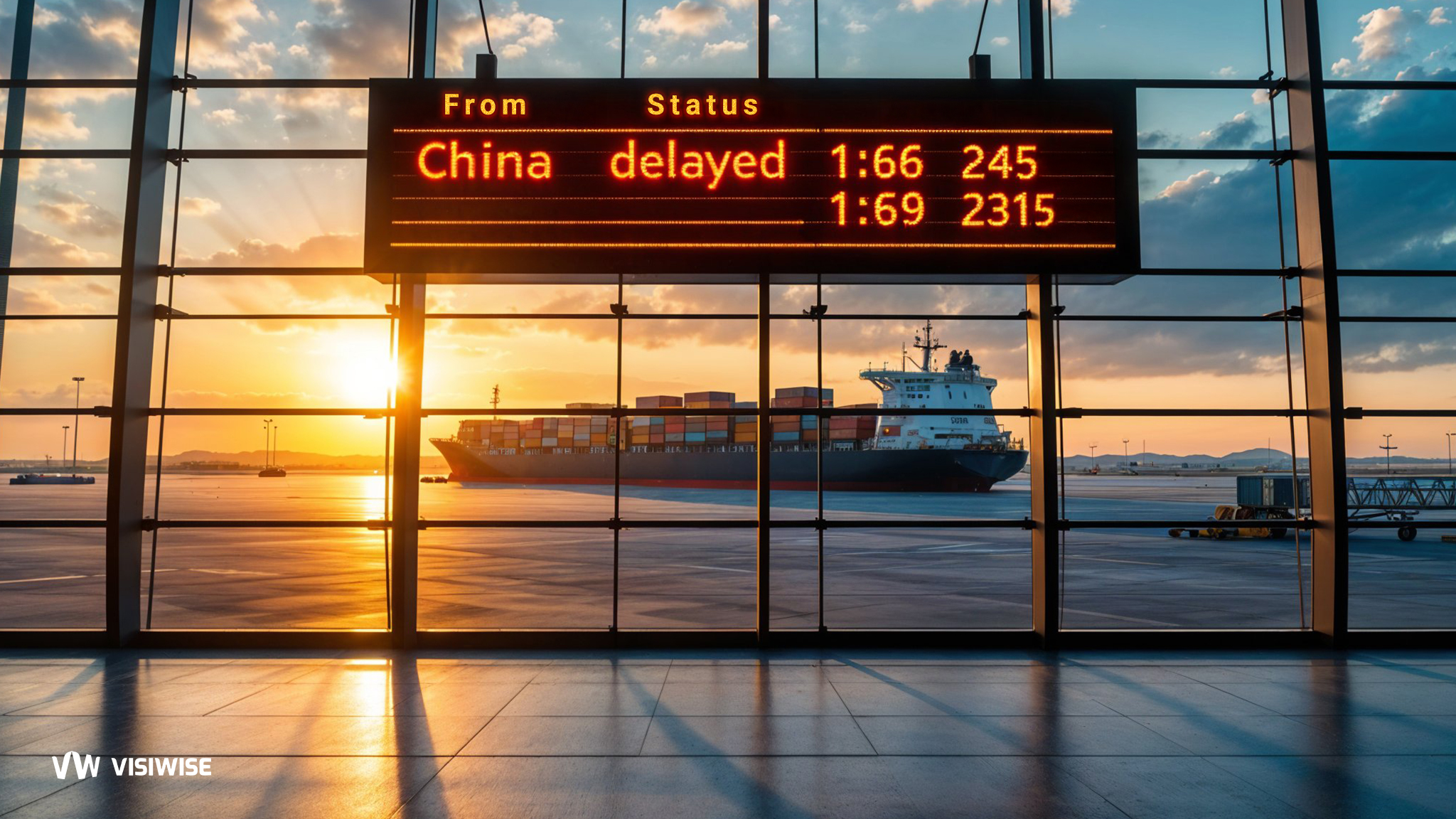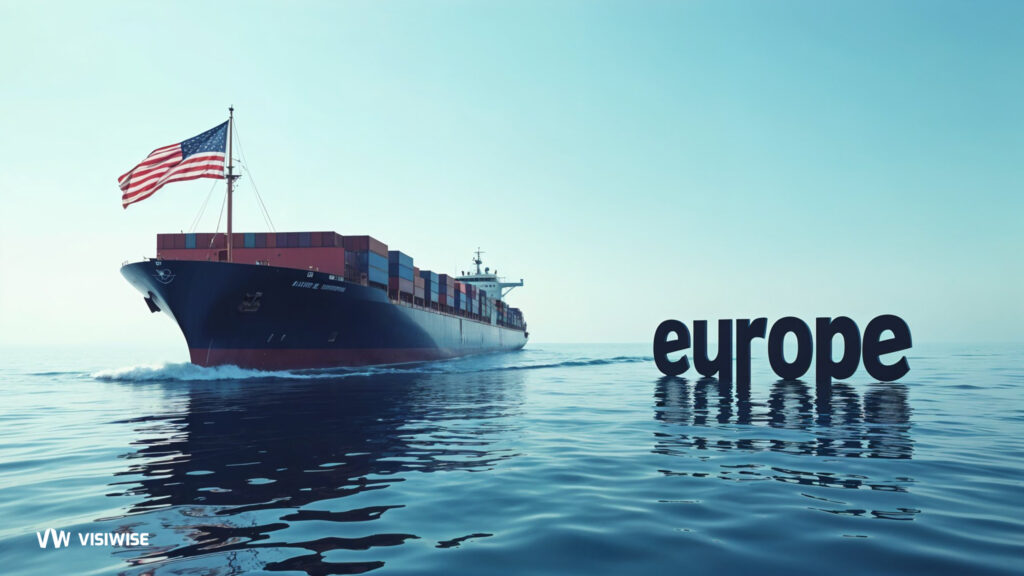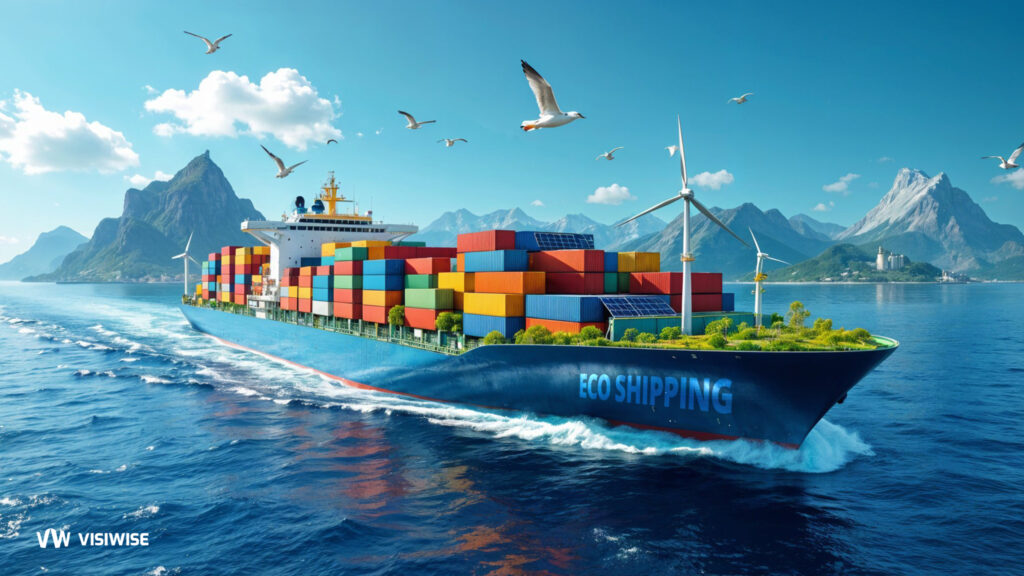The rise of global e-commerce has left millions of consumers and businesses dependent on shipments from China. But the most common complaint is the long wait for packages. These delays can be attributed to a number of factors such as the selected shipping method, customs process, policy changes, and logistical challenges. Learning about these factors can help you understand and manage your expectations — and even find ways to reduce wait time.
Common Shipping Methods from China
Air Freight
Air freight is going to operate like the traditional shipping you’re accustomed to. You’ll receive a tracking number once it’s loaded onto the plane and will be able to track your products for the duration of the shipping process. Air freight will be the fastest form of shipping. However, compared to sea freight, it will be far more expensive. Depending on your product, it may not even be a viable option.
Sea Freight
If you’re making a large volume order or your products are particularly heavy, you should be using sea freight. You’ll find sea freight rates to be noticeably more affordable, but the transit time is longer and using sea freight requires far more logistical planning. If you partner with Kanary, you’ll most likely be using sea freight.
ePacket Services
EPacket is an affordable international ecommerce shipping service for small packages containing low-cost items sent from China and Hong Kong.
Introduced in 2011, ePacket, is used by third-party logistics providers to enable online stores using products from China to allow customers faster delivery.
Similar to services offered by Chinese suppliers, ePacket gives dropshipping businesses the ability to compete on delivery speed with local manufacturers. Although typically cheaper than alternative international shipping solutions, ePacket costs can vary based on package weight and destination.
Consolidated Shipping
Consolidated shipping is a freighting technique where various products (or a high volume of a single product) are consolidated onto a single, or multiple, shipping containers. Businesses will consider using consolidated shipping for a variety of reasons, though the following are the most common:
- High-volume production that takes place over an extended -period of time.
- Multiple-product orders where a single product won’t fill an entire container
- A combination of the two
While consolidated shipping is used for both sea freight and carrier shipping, sea freight consolidated shipping requires far more logistical planning. Not only will you need to consider where in China the products are being manufactured, but also where the products are stored before shipment. Additionally, you’ll need to consider the need to schedule production according to when you book your shipping container and when it is departing.
Postal services
Most parcels in China are sent by China Post. Whenever you place an order, whether it is as a consumer or as a business, you get to select a certain delivery option. The parcels will get a specific tracking number and will go through the system. Outside of China, the parcel is handed over to a local postal service, like USPS, DHL, FedEx, or Royal Mail. They will make sure that the parcel is delivered to your address or business.
How Shipping Methods Effects the Delivery Time
Delivery time mostly depends on the type of transport and routing. Air transport is considerably faster than shipping, so it is preferred for time-sensitive, high-value shipments. It can be pricier though and may come with weight and dimensions restrictions.
Moreover, the route of transport is one of the significant factors determining the time of delivery. Direct routes — shipments going from the origin to the destination without any mid-system stops — are the fastest and most efficient. Transshipment routes — in which packages change ports, airlines or carriers along the way — can more than triple transit times. This delay is typically caused by packing and logistical coordination, customs clearance at points of transfer, and potential congestion at intermediary hubs.
In such cases, businesses or individuals can opt for direct flights, choose express shipping service over regular ones, and work with logistics providers that take care not to transship packages to ensure timely delivery and reduce transit timings.
Customs Clearance and Regulatory Delays
Customs clearance delays happen when the package gets inspected by customs clearance authorities, so that the delivery takes a longer than normal time. This process is overseen by customs agencies, which are government entities responsible for assessing taxes and duties on goods that enter and exit a country. Customs formalities start in the country of origin and end in the country of destination.
Some goods may be subject to import or export restrictions or prohibitions under local laws and regulations. Deciding if your goods are eligible for shipping should be done well in advance of shipping them. It is extremely helpful to familiarize yourself with the relevant regulations, and to ensure compliance in advance — as doing so can prevent potential customs clearance issues and make shipping as smooth as possible.
10 Essential Tips to Avoid Customs Delay
In order to smooth the path for your international shipments at customs, keep these proactive tips in mind:
- Choose a Reliable Shipping Company: Your shipping company will be significantly influential in ensuring the smooth handling of customs processes.
- Use the Tracking Tools: Always keep the packaging tracking number so you can track the location of the shipment.
- Pay Taxes: Pay all customs duties and ensure timely payment to avoid unnecessary delays.
- Double Check Shipping Details: Ensure your shipment’s weight and labels are correct before dispatch.
- Document properly: Fill and submit the right paperwork —like your commercial invoice accurately.
- Skip any Banned Goods: Your shipment cannot contain things that are prohibited in the country of origin or the destination.
- Check Customs Regulations in Prior: Research how customs work in the destination country to avoid issues with this process.
- Seek Help from a Customs Broker: A broker offers expert advice and service, especially for intricate shipments or high-value goods.
- Document Everything: Document every aspect of your shipping process; maintaining a detailed record of your shipments can help settle any disputes more easily.
Weather Issues Such as Typhoons
Typhoons and other unpredictable weather conditions create difficulties for China shipping. China also suffered 10 typhoons in 2023 on average, or 7 to 8 typhoons per year, affecting large-scale disruptions of shipping routes and schedules. The severe effects of such natural disasters are usually seen on the air and sea transportation too which can take days and weeks to settle down.
Typhoons aren’t the only type of weather-related shipping issues. Also, heavy rains in southern parts and blizzards in northern areas can cause major delays and higher costs. Bad weather causes problems for every type of shipment resulting in higher freight rates, or longer transit times.
Weather has a direct correlation to the capacity of freight shipments, so it is imperative to plan accordingly. Shippers may also take proactive steps to help mitigate risks by anticipating weather impacts. That could include adding extra time to shipping schedules during typhoon season, considering alternative routes or modes of transport, and staying up to date on weather forecasts along shipping routes.
Effect of Recent Policy Changes
A number of changes in international trade policies recently have also led to longer delivery times for packages arriving from China. Such changes in policy and procedure have impacted all mechanisms of the shipping, including customs clearance, tariffs, and import regulations, among others. Keeping these changes in mind is that it will explain why shipping from China no longer have the speed it used to have.
Changes in De Minimis Import Rules
One major international shipping development has been the adjustment of de minimis import thresholds in various countries. And de minimis is the minimum threshold of goods that can be imported without incurring duties and taxes. Several nations, including the United States and European countries, have raised this threshold, so more goods now must go through formal customs processing.
In the U.S., for example, the de minimis value used to be $800, meaning most small packages wouldn’t incur fees to enter the country. However, this threshold is now being revised, meaning that more packages in addition to those containing low-value goods from China now undergo customs clearance. In turn, this has resulted in longer processing times in which packages need extra documentation, inspections, and sometimes even tariffs applied, all the while creating delays that were previously unnecessary.
Increased Tariffs and Their Effects
The second major policy that has had a big influence on shipping from China has been the introduction of higher tariffs, in response to the ongoing China trade war. The U.S. and many European nations have raised duties on Chinese imports and customs clearance has become more rigorous.
While these tariffs protect local businesses and correct trade imbalances, they also prolong inspections and compliance checks. Customs authorities must check whether the appropriate tariff rates are being applied to imported goods. Additionally, businesses and consumers must go through more complicated paperwork and regulations to follow these tariff rules. That often means that goods from China are delayed longer than expected as they face extra customs procedures.
The elevated tariffs also impose new financial costs on both consumers and businesses, including increasing the cost of Chinese goods. This has implications not only for shipping times, but also the wider economy, amid an overall slowdown in world trade and rising logistics costs.
Logistical Challenges and Backlogs
Congestion at Ports and Airports: High shipping volumes, especially during peak seasons, cause backlogs at entry points.
Limited Cargo Space: Airlines and shipping companies focus on high-value cargo and prioritize those shipments over standard packages.
Delivery Carrier Delays: Once a package has reached a country, local services are still facing delays − whether due to weather, labor shortages or less efficient systems.
Tips for Consumers Awaiting International Shipments
Although shipping delays are sometimes unavoidable, consumers have the opportunity to take some preemptive steps to minimize their severity.
Select Express Shipping: If you want to prioritize speed, go for air freight or express courier services.
Order Early: Plan purchases months ahead of when you actually need them, to allow for delays.
Track Your Shipments Constantly: You shall track every shipment when tracking services are available.
Contact the Seller or Courier: If a package is delayed, contact the seller or shipping company for updates.
Be Aware of Local Customs Requirements: Import regulations may vary, make sure to avoid unnecessary holds.
Final Thoughts
Shipping from China can be affected by a number of factors, from the overall shipping method, to customs clearance, to policy changes and logistical challenges. While air freight is fast, it’s more expensive than sea freight, and postal service which offers low prices can take a long time in transit. Delivery timelines can be more complex by external factors like weather conditions, regulatory changes and port congestion.
In order to overcome these challenges, consumers and businesses alike could take pro-active measures — such as choosing faster shipping options when available, being knowledgeable about what customs require, and closely monitoring shipments. From international tariffs to local regulations, knowing how this works allows for better planning and lays the groundwork for expectations, resulting in smoother transactions in the rapidly changing landscape of international e-commerce.
FAQs
How long should I wait for a package from China?
One thing you should take into account when ordering from China is that it can take anywhere between several days to several months before your order arrives. Now, how long does a shipment take will depend on the type of the products that you ordered, the means of transport that you use, the custom clearance, the seller from which you bought it and so on. Typically, that shipment would take 10 to 90 days to reach its destination.It is up to the reseller or shop owner to select and offer a certain type of shipping. If you want shipping to be done faster or more reliable, you can take it up with the reseller. Especially if you are a big buyer, there is usually a lot that can be done to improve shipping.
Why are shipments from China taking so long?
A 2-week delay in delivery is common, especially with echelon shipping methods (ie: sea freight is much slower than air freight), customs clearance delays, increased shipping demand in China, and global supply chain and logistics issues. amortized certainly takes longer on stuff like weather patterns, port congestion, and the time it takes for sellers to process and ship orders.
Why isn’t my package from China moving?
If your package seems not to be moving, the delays may be at the seller’s end in processing orders, at customs inspections, a backlog at shipping facilities or because of transit issues. In some cases, the tracking updates are not prompt, meaning that the parcel can still be en route despite the same condition. If a package sits for a long time, reaching out to the seller or the shipping carrier can give added information.
How long should a parcel take from China?
- Shipping time from China depends on the shipping method.
- Expedited shipping (DHL, FedEx, UPS): 3-7 days
- Air freight: 7-15 days
- Standard shipping (China Post, ePacket): 12–45 days
- Sea freight: 30-90 days
Why does shipping from China to Canada take so long?
The shipping time from China to Canada can vary because of the time needed for customs clearance, transit times, and port congestion. Transit times are extended with standard or economy shipping methods due to multiple checkpoints and handling processes. Shipping times can also be longer than normal when it comes to peak seasons, like holiday or big sale events, as more packages are being handled.
How can I get faster shipping from China?
To expedite shipping from China:
- Select express shipping services: DHL, FedEx, UPS
- Order from suppliers that have warehouses in North America.
- Confirm with the seller whether there are rush processing options.
- Be careful with peak seasons – when there’s a lot of shipping demand.
- Partner with freight forwarders experienced with expedited shipping.



